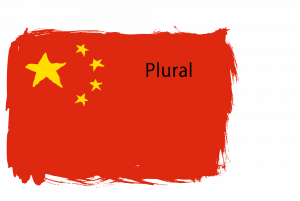Difference between revisions of "Language/Mandarin-chinese/Grammar/Plural"
< Language | Mandarin-chinese | Grammar
Jump to navigation
Jump to search
| Line 1: | Line 1: | ||
[[File:Plural in Chinese.png|thumb]] | [[File:Plural in Chinese.png|thumb]] | ||
<div class="pg_page_title">How do we express plural in Mandarin Chinese?</div> | |||
In Chinese, there is no suffix for showing plural. But when we are referring to a group of people, or animals sometimes, we can add 們/们 (men) after the word. | In Chinese, there is no suffix for showing plural. But when we are referring to a group of people, or animals sometimes, we can add 們/们 (men) after the word. | ||
For example: | For example: | ||
人(rén)[man] + 們/们 = 人們/人们 (rén men) [men] | * 人(rén)[man] + 們/们 = 人們/人们 (rén men) [men] | ||
老师(lǎo shī)[teacher] + 們/们 = 老师們/们(lǎo shī men)[teachers] | * 老师(lǎo shī)[teacher] + 們/们 = 老师們/们(lǎo shī men)[teachers] | ||
学生(xué shēng)[student] + 們/们 = 学生們/们(xué shēng men)[students] | * 学生(xué shēng)[student] + 們/们 = 学生們/们(xué shēng men)[students] | ||
Revision as of 22:53, 8 April 2022
How do we express plural in Mandarin Chinese?
In Chinese, there is no suffix for showing plural. But when we are referring to a group of people, or animals sometimes, we can add 們/们 (men) after the word.
For example:
- 人(rén)[man] + 們/们 = 人們/人们 (rén men) [men]
- 老师(lǎo shī)[teacher] + 們/们 = 老师們/们(lǎo shī men)[teachers]
- 学生(xué shēng)[student] + 們/们 = 学生們/们(xué shēng men)[students]
